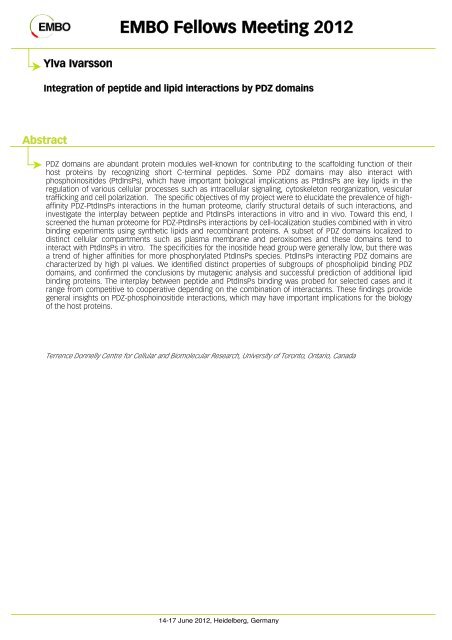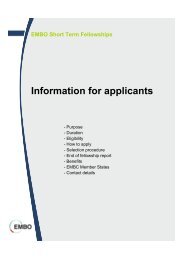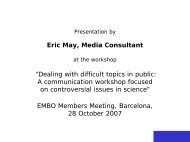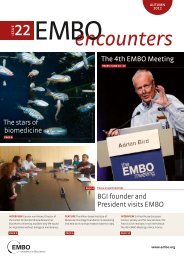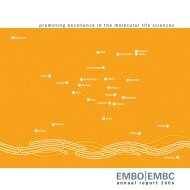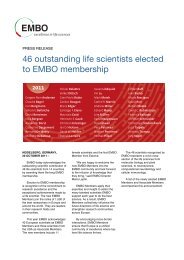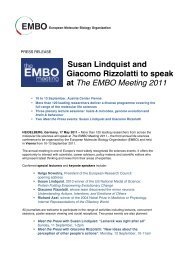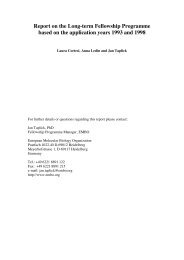EMBO Fellows Meeting 2012
EMBO Fellows Meeting 2012
EMBO Fellows Meeting 2012
You also want an ePaper? Increase the reach of your titles
YUMPU automatically turns print PDFs into web optimized ePapers that Google loves.
Ylva Ivarsson<br />
<strong>EMBO</strong> <strong>Fellows</strong> <strong>Meeting</strong> <strong>2012</strong><br />
Integration of peptide and lipid interactions by PDZ domains<br />
Abstract<br />
PDZ domains are abundant protein modules well-known for contributing to the scaffolding function of their<br />
host proteins by recognizing short C-terminal peptides. Some PDZ domains may also interact with<br />
phosphoinositides (PtdInsPs), which have important biological implications as PtdInsPs are key lipids in the<br />
regulation of various cellular processes such as intracellular signaling, cytoskeleton reorganization, vesicular<br />
trafficking and cell polarization. The specific objectives of my project were to elucidate the prevalence of highaffinity<br />
PDZ-PtdInsPs interactions in the human proteome, clarify structural details of such interactions, and<br />
investigate the interplay between peptide and PtdInsPs interactions in vitro and in vivo. Toward this end, I<br />
screened the human proteome for PDZ-PtdInsPs interactions by cell-localization studies combined with in vitro<br />
binding experiments using synthetic lipids and recombinant proteins. A subset of PDZ domains localized to<br />
distinct cellular compartments such as plasma membrane and peroxisomes and these domains tend to<br />
interact with PtdInsPs in vitro. The specificities for the inositide head group were generally low, but there was<br />
a trend of higher affinities for more phosphorylated PtdInsPs species. PtdInsPs interacting PDZ domains are<br />
characterized by high pI values. We identified distinct properties of subgroups of phospholipid binding PDZ<br />
domains, and confirmed the conclusions by mutagenic analysis and successful prediction of additional lipid<br />
binding proteins. The interplay between peptide and PtdInsPs binding was probed for selected cases and it<br />
range from competitive to cooperative depending on the combination of interactants. These findings provide<br />
general insights on PDZ-phosphoinositide interactions, which may have important implications for the biology<br />
of the host proteins.<br />
Terrence Donnelly Centre for Cellular and Biomolecular Research, University of Toronto, Ontario, Canada<br />
14-17 June <strong>2012</strong>, Heidelberg, Germany


